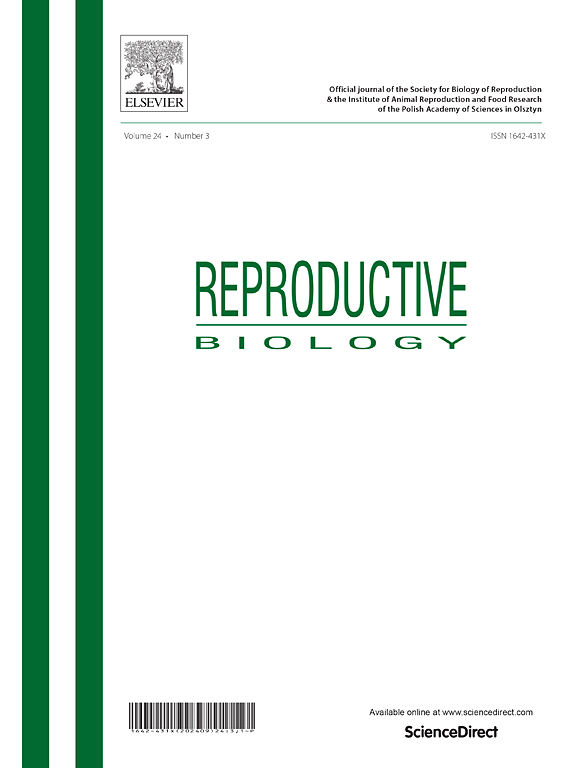美洲rhea (rhea americana)性腺形态发生与性分化
IF 2.5
3区 生物学
Q3 REPRODUCTIVE BIOLOGY
引用次数: 0
摘要
美洲美洲豹(美洲美洲豹)是一种温顺、适应性强的美洲豹,在生产肉、蛋、羽毛和皮革方面具有显著的动物技术潜力。除了经济意义之外,圈养繁殖在保护中也起着重要作用。然而,关于其胚胎和性腺发育的信息仍然有限,这些知识对改善生殖管理至关重要。本研究旨在表征人工孵化期间的性腺分化,重点关注第9、12、15、18、21和24天的发育阶段。我们对生殖细胞和体细胞进行了详细的形态学和细胞学描述,记录了第9天性腺嵴的出现,第12天未分化性腺的形成,以及第15天性分化的开始。皮质厚度和性腺-中肾区关系的形态计量学分析使两性之间的比较成为可能。性腺位于中卵膜的颅腹侧,睾丸成熟早于卵巢分化。透射电镜显示,男性生殖细胞的线粒体密度高于女性生殖细胞,表明早期功能分化。这些结果有助于了解美洲大蠊的生殖发育,并为美洲大蠊及其近缘种的保护和育种策略的制定提供依据。本文章由计算机程序翻译,如有差异,请以英文原文为准。
Gonadal morphogenesis and sexual differentiation in rhea (Rhea americana)
The rhea (Rhea americana) is a docile and highly adaptable ratite with notable zootechnical potential for the production of meat, eggs, feathers, and leather. Beyond its economic relevance, captive breeding plays an important role in conservation. However, information on its embryonic and gonadal development remains limited—knowledge that is essential for improving reproductive management. This study aimed to characterize gonadal differentiation during artificial incubation, focusing on developmental stages at days 9, 12, 15, 18, 21, and 24. We provide a detailed morphological and cytological description of germ and somatic cells, documenting the appearance of the gonadal crest at day 9, the formation of undifferentiated gonads by day 12, and the onset of sexual differentiation at day 15. Morphometric analyses of cortex thickness and gonad–mesonephros area relationships enabled comparisons between sexes. The gonads were positioned cranioventrally on the mesoneph, and testicular maturation occurred earlier than ovarian differentiation. Transmission electron microscopy revealed greater mitochondrial density in male germ cells than in female germ cells, indicating early functional divergence. These results contribute to the understanding of reproductive development in R. americana and support the development of conservation and breeding strategies for this and related species.
求助全文
通过发布文献求助,成功后即可免费获取论文全文。
去求助
来源期刊

Reproductive biology
生物-生殖生物学
CiteScore
3.90
自引率
0.00%
发文量
95
审稿时长
29 days
期刊介绍:
An official journal of the Society for Biology of Reproduction and the Institute of Animal Reproduction and Food Research of Polish Academy of Sciences in Olsztyn, Poland.
Reproductive Biology is an international, peer-reviewed journal covering all aspects of reproduction in vertebrates. The journal invites original research papers, short communications, review articles and commentaries dealing with reproductive physiology, endocrinology, immunology, molecular and cellular biology, receptor studies, animal breeding as well as andrology, embryology, infertility, assisted reproduction and contraception. Papers from both basic and clinical research will be considered.
 求助内容:
求助内容: 应助结果提醒方式:
应助结果提醒方式:


